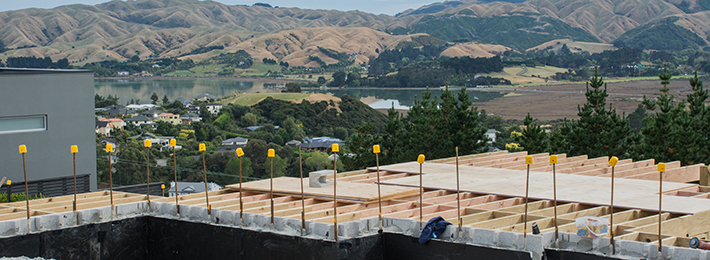November consents provide a boost
09 Feb 2017, Featured, Industry News

Overall trend shows signs of decreasing following 12-year high mid-2016
Statistics New Zealand’s latest release showed that 2,973 new dwellings were consented in November – including 1,886 houses – the most new dwellings consented in a November month since 2006.
However, seasonally adjusted the number of new dwellings consented fell 9.2%, following a 2.0% increase in October. The trend is showing signs of decreasing after reaching a 12-year high in the middle of last year.
For houses only, the seasonally adjusted number fell 7.7%. It’s the third consecutive month the number has fallen, following dips of 1.4% and 3.4% in October and September respectively.
In the regions
In November 2016 compared to November 2015, 13 out of the 16 regions consented more new dwellings. Auckland (up 190 to 1,156; +20%), Waikato (up 56 to 340; +20%) and Manawatu-Wanganui (up 46 to 94; +96%) recorded the largest increases. Bay of Plenty, Gisborne, Hawke’s Bay, Marlborough, Nelson, Northland, Otago, Southland, Taranaki and Tasman also recorded an increase.
Wellington (down 196 to 132; -60%), Canterbury (down 114 to 459; -20%) and West Coast (down one to two; -33%) were the only regions to consent less new dwellings in November 2016 compared to November 2015.
Value of non-residential building consents drops
The value of consents for non-residential buildings in November 2016 was $411m – down $120m or 23% from November 2015. The largest contributors were:
- Offices, administration, and public transport buildings – $102 million.
- Storage buildings – $79 million.
- Education buildings – $58 million.
Consents for all buildings total $1.6 billion
The total value of building work consented in November 2016 was $1.6 billion, comprising $1.2 billion of residential work, and $411 million of non-residential work.
Why consents?
Statistics New Zealand Statistical Analyst Melissa McKenzie says building consents are a good indicator of the number of new dwellings expected to be constructed in the near future. As a result, they’re often used to monitor growth intentions within the New Zealand construction industry.
Melissa says there are a number of reasons for choosing to work with building consents over other administrative data sources.
“The data is available in a timely fashion and, because it’s sourced from councils across the country, provides a good sample spread. We use a consistent methodology as well, so the information can be compared accurately over time.”
Majority of consents completed
Statistics New Zealand Statistical Analyst Mark Darbyshire, who works on the monthly consent data, says that while people like to say, “you can’t live in a consent”, the reality is that almost all new dwellings consented do get built.
“I’d say over 95% of new dwelling consents are completed; however, there could be a lag of six to 12 months before they become part of the actual building stock, but eventually they do flow through,” Mark says.
He says that a couple of years ago they looked at what percentage of new dwelling consents in Auckland were carried through to completion over a period of time.
“I used a ballpark methodology, so it wasn’t foolproof, but found that the majority of the time around 97% of consents are completed. During the period of the global financial crisis, it dropped to around 90%, which I think could have been due to a number of apartment projects falling through.”
Mark says that another report produced by Statistics New Zealand, the quarterly Value of Building Work Put in Place, based on consent numbers and surveys, is used primarily to estimate the quarterly volume of building work in the economy to be fed into GDP.
However, he said that it could also be of value to builders as it gives an indication of how much building work is actually happening at a given point in time.
Register to earn LBP Points Sign in



